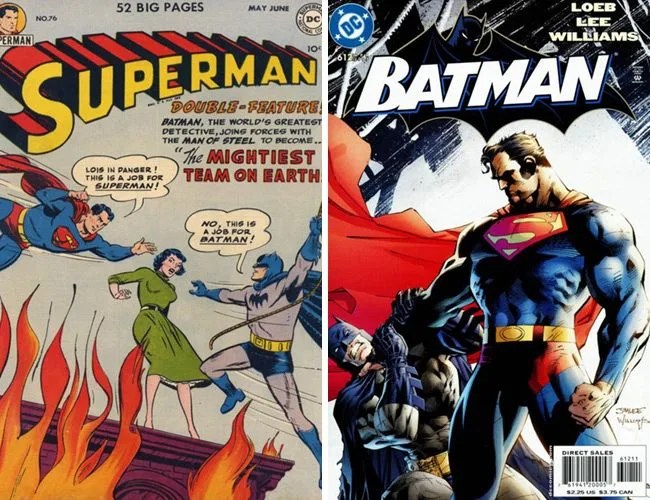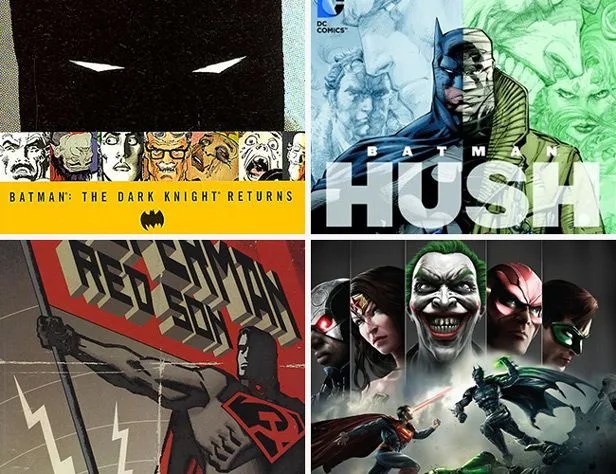Zach Snyder’s Batman v Superman hits theaters today, but before you buy your ticket, you may want to take a minute to study up. In the world of comics, Batman and Superman are both vanguard and elder statesmen. Within the past ten years we’ve seen five films featuring the caped heroes (two for Superman, and Nolan’s Batman triptych.) But even as these cutting-edge films rise, they’re dwarfed by a printed lineage reaching back decades. Think five films in ten years is a lot? Consider the hundreds of thousands of pages printed since the heroes first hit the shelves back in the late 1930s. That’s a daunting amount of history, but we’ve got just the guy to help you stay informed.
The 2015 edition of the Guinness Book of World Records named Southern-California-native Bob Bretall as the owner of the largest comic-book collection in the world. As of six months ago, the official count rests at a heady 101,822 unique issues (no duplicates), but he’s certain that he has cracked 103,000 since then. A collection as vast and nearly complete as Bretall’s is perhaps best measured in terms of what he doesn’t have. He is a mere 67 issues short of owning every Marvel superhero comic book and, though he is less of a DC completist, he owns the entire collections (that is, every single issue) of The Justice League of America, Teen Titans, Hawkman and more. “I think what makes my collection special is its breadth,” says Bretall. “It’s not just superheroes.” Even though he was initially bit by the radioactive comic-collecting bug after reading his first Amazing Spider-Man issue at age eight, these days he’s more partial to independent and un-caped titles like Saga or The Walking Dead.
But Bretall, a husband, father and M.S. of Computer Science, is not just a comic-book collector. He refers to himself as an “Ambassador of Comics,” a title he fulfills in his earnest, methodical approach to his well-curated collection. “I bought all these comics, pretty much off the rack. I’ve been doing it every month since the summer of 1970,” he says during our conversation — and he’s read most of them too, at a steady clip of 120 issues per month. “Lots of collectors buy in bulk, but this is all me buying these books and reading them myself,” he says. When he’s not reading the books, Bretall is spreading their gospel, donating comics by the thousand to friends and military servicemen and maintaining a rigorous not-for-profit webpage, comicspectrum.com, on which he publishes reviews, tips for comic book collectors and more.
When it comes to Batman, Superman and their upcoming movie, we had some questions. Where did Batman and Superman crossovers come from? What are some examples of major battles they’ve had in past story arcs? What should we expect with Snyder’s Batman v Superman universe? Bretall took a moment to educate us.

1 Understand the larger history of the Batman and Superman crossover. When it comes to Batman and Superman — DC’s “big two,” as Bretall calls them — the heroes have been close for decades. In fact, at first, they even shared the same book. According to Bretall, from 1941 to 1954 the two heroes’s stories ran side by side between the covers of World’s Finest Comics. “It had Batman and Superman in it — every issue — because they were the most popular superheroes for DC at the time,” says Bretall. “But they never teamed up. It was always separate — Batman’s story and Superman’s story side by side in the issue.” According to Bretall, It wasn’t until issue 71 in 1954 that the two heroes actually joined storylines, and not for the reasons you might think. “Part of it had to do with the reducing the physical size of the comic books,” says Bretall. “There wasn’t enough room to have two full stories, so they combined Batman and Superman together.”
2 Batman and Superman weren’t always enemies. In fact, in their early print iterations, it was quite the opposite. “Back then, they were best buddies,” says Bretall, referring to the first handful of times the heroes teamed up, from the ’40s to the ’80s. “You didn’t have Batman against Superman unless there was some misunderstanding. They knew each other’s secret identities, and they would help each other out.”

